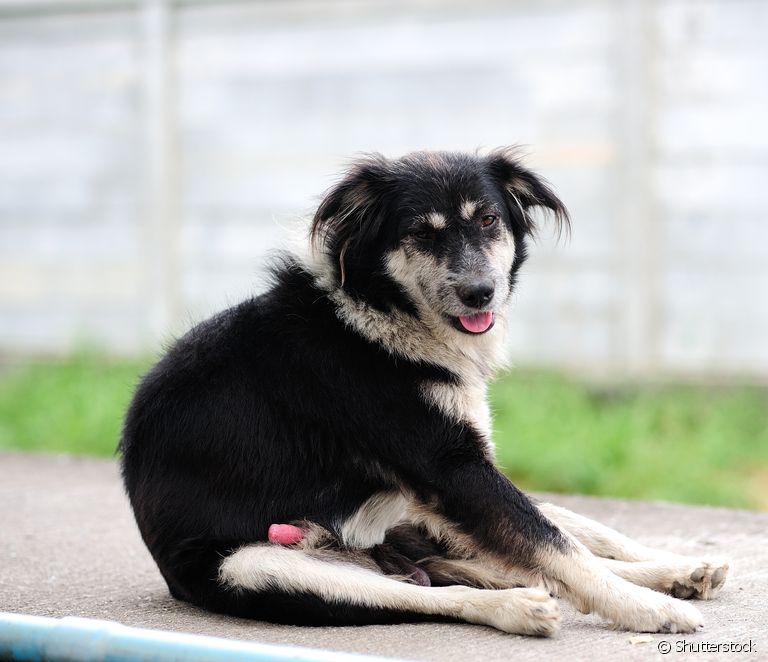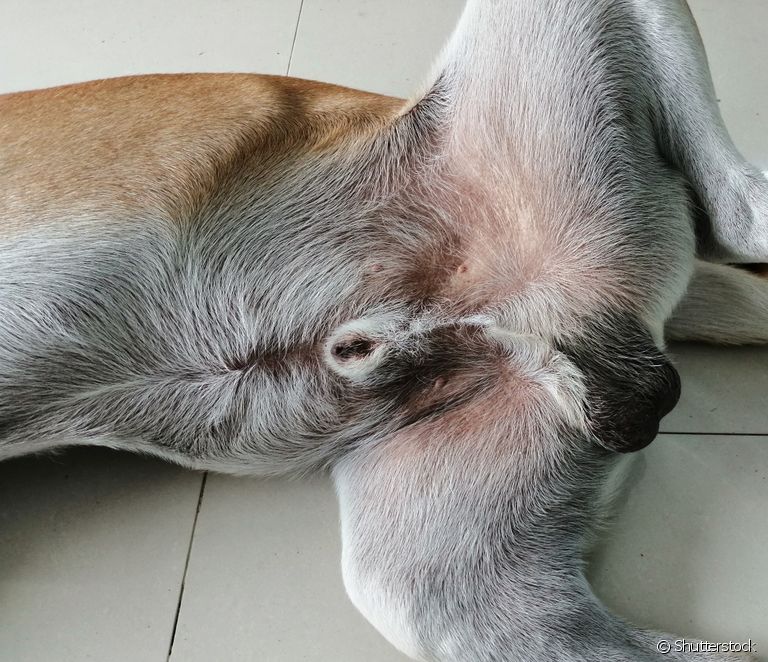Phimosis and paraphimosis in dogs: what to do?

Table of contents
The dog penis is a sensitive region and susceptible to diseases due to the exposure of the organ. Phimosis and paraphimosis in dogs are more common than you think and, even with similar names, they are different pathologies that affect the canine organ: while phimosis makes it difficult to expose the glans, paraphimosis is a complication in which the skin of the foreskin retracts and the pet cannot cover the bulb.The good news is that there is a cure and treatment is similar to the care of conditions in humans.
However, in the case of the dog, more attention is needed so that it does not complicate the therapy, which can be painful. We have gathered some information about paraphimosis and phimosis in dogs, in addition to the care recommendations on a daily basis. check out!
Canine phimosis and paraphimosis: what's the difference?
The dog's penis is a cavernous muscle that we only see when it is exposed. Formed by foreskin (skin that covers the entire inner region), body (internal area), root (makes the connection of the body to the ischial arch - a kind of canine pelvis) and glans (tip that is exposed during erection), the organ is the cavity of the urethra and responsible for expelling semen during mating. Phimosis and paraphimosisare different complications, which characterize the exposure or not of the glans and body through the foreskin. Understand the difference between each condition:
- Canine phimosis - A dog with phimosis will find it difficult to expose the limb through the foreskin (i.e. stick it out), a problem that causes a lot of pain and discomfort. It is treatable, but it is important to seek veterinary advice to avoid worsening the condition. Phimosis in dogs is usually congenital, but the animal can also develop it after trauma or after recovery from inflammation.When congenital, it is common for phimosis to have no opening or excess preputial skin. Symptoms such as difficulty urinating and accumulation of discharge on the dog's penis are common.
- Paraphimosis in dogs - Unlike phimosis, paraphimosis in dogs is characterized by overexposure of the glans and body. In this case, there are difficulties in retracting the penis to the foreskin. It is a common but extremely painful disorder that can become severe due to blood drainage from the site and the risk of infection in the dog's penis. The time of exposure of the bulb is what differentiates erection from paraphimosis - the length of time the bulb is exposed.usually the erection lasts from 15 minutes to an hour, while paraphimosis exceeds this period. The causes range from trauma to a swelling in the foreskin. It is curable, but requires veterinary follow-up.


Dog penis: phimosis or paraphimosis need proper treatments
The dog with phimosis needs veterinary evaluation to identify the best treatment, which can be clinical or surgical. In the clinical treatment, the veterinarian recommends massages with anti-inflammatory creams and ointments to encourage the glans of the foreskin to come out. The use of a warm compress on the area and topical analgesics are also common. Phimosis requires a routine of care at home, wherebyIn phimosis surgery, the dog undergoes a procedure called postectomy (known as circumcision) which consists of removing skin from the foreskin to facilitate opening.
After the diagnosis of paraphimosis in dogs, it is also necessary to strictly follow the veterinary recommendations to contain the severity of the problem. As with phimosis, the treatment of paraphimosis consists of the use of ointments and massages that stimulate the compression of the glans to its natural state. Hygiene of the site is also necessary to prevent the accumulation of bacteria from the glans. The surgery ofparaphimosis in dogs is also done with skin removal which in this case presses the bulb outwards.
Care against trauma and infection prevents phimosis or paraphimosis on the dog's penis
The dog's penis is a sensitive region that can suffer injuries and even sexually transmitted diseases, such as a canine venereal tumor or bacterial brucellosis. Another possible problem is canine balanoposthitis, penile inflammation resulting from trauma from fights or contact with bacteria. Phimosis and paraphimosis, however, affects any breed of dog, from the mongrel puppy to large dogs.size, such as the Boxer.
Castration reduces the development of tumors and prevents instincts to fight or run away that lead to damage to the organ that can cause one of the conditions. At home, watch for symptoms such as excessive licking and discomfort. How to tell if your dog is in pain is quite simple: he will have difficulty walking, as well as howling and changes in behavior.
See_also: What is the right dog flooring? Understand how slippery flooring affects your pet's joints

